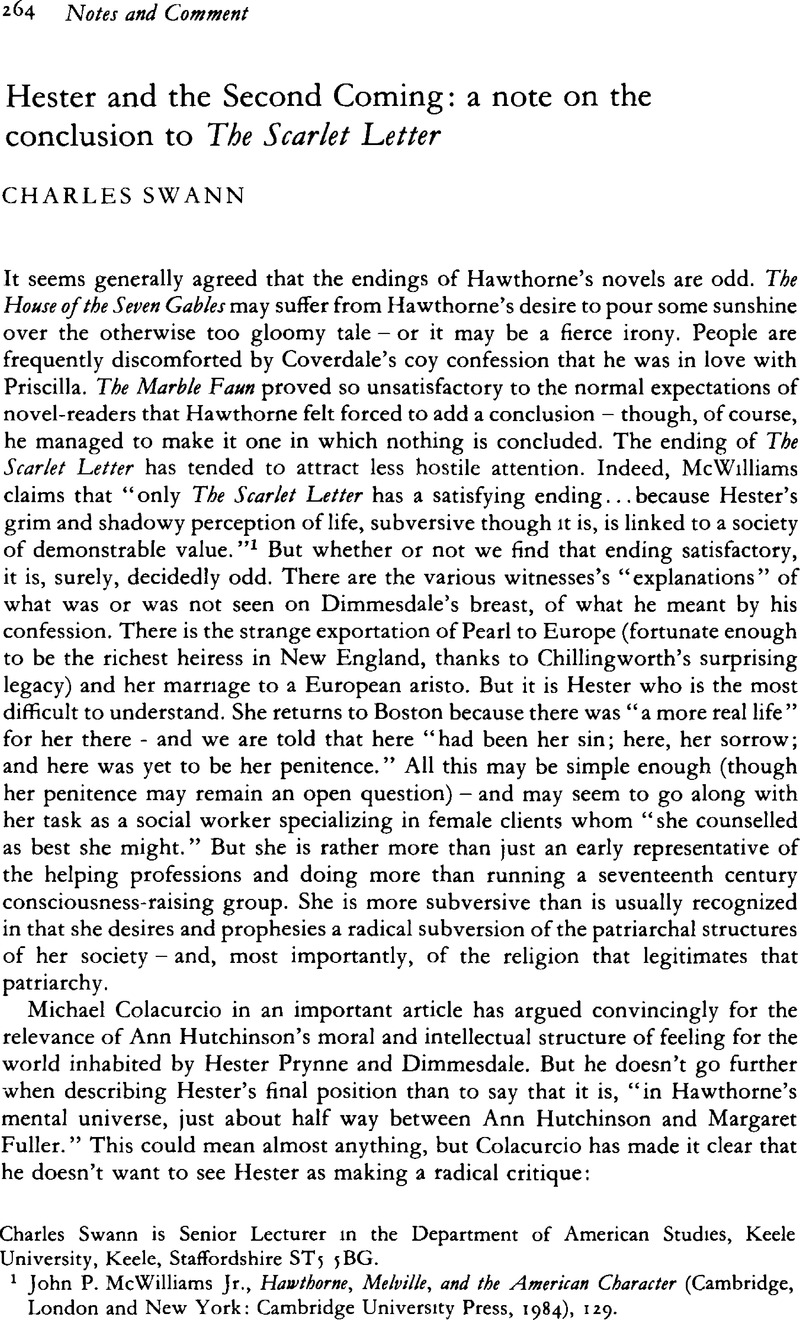No CrossRef data available.
Published online by Cambridge University Press: 16 January 2009

1 McWilliams, John P. Jr., Hawthorne, Melville, and the American Character (Cambridge, London and New York: Cambridge University Press, 1984), 129.Google Scholar
2 Colacurcio, Michael J., “Footsteps of Ann Hutchinson: The Context of The Scarlet Letter,” ELH 39 (1972), 459–94.CrossRefGoogle Scholar
3 Warren, Austin, “The Scarlet Letter: A literary Exercise in Moral Theology,” The Southern Review, 1, New Series (01 1965), 22–45.Google Scholar
4 Perry, Miller, ed., Margaret Fuller: American Romantic (New York: Anchor Books, 1963), 162.Google Scholar
5 “Shaker adventism was shown to be spiritual and not physical. ‘As the substance of the first woman was taken from the body of the first man; so that Divine Spirit with which the second woman was endowed…was taken from the Spirit of Christ.’ Mother Ann thus became the ‘Second pillar of the Church of God,’ but the Shakers were careful to state that they did not mean the ‘human tabernacle’ of Ann Lee. That was but the instrument for the expression of divine truth, which could not complete his work until all men had become spiritual.” Tyler, Alice Felt, Freedom's Ferment: Phases of American Social History from the Colonial Period to the Outbreak of the Civil War (New York: Harper & Row, 1962), 146–47.Google Scholar
6 Baym, Nina, The Shape of Hawthorne's Career (Ithaca and London: Cornell University Press, 1976), 130, 141.Google Scholar